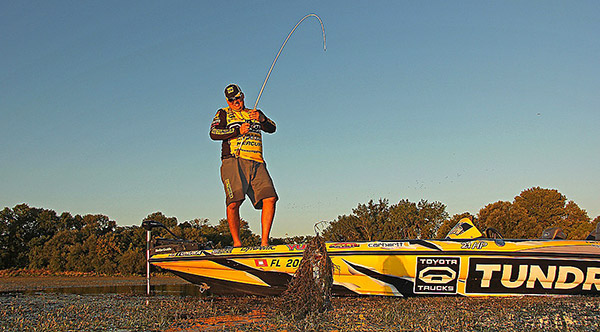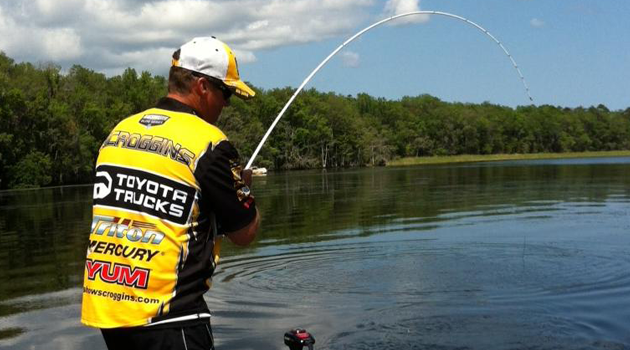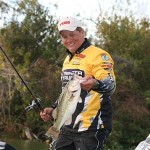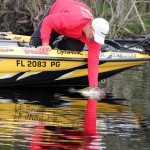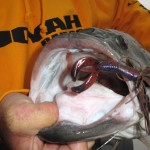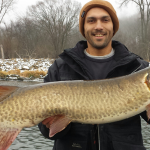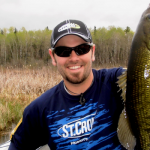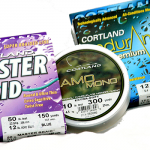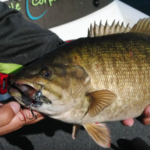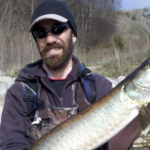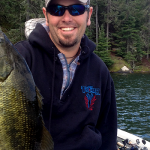By William Redmond
Deep and slow always seems to be a solid summer bass strategy. The fish are generally lethargic and rarely given to the chasing mood we find during spring and fall. Enticing presentations are important during these sluggish times, so for tips on the topic, we turn to a pair of Bassmaster Elite Series pros, Terry Scroggins and Cliff Prince.
SHOOT FROM OUTSIDE
Scroggins is first up with his look at dense summer weed mats. When bass take refuge in the cool shadowy world beneath tangled masses of hydrilla and countless other aquatic weeds, punching through with heavily weighted worms, craws or tubes usually does the trick. However, Scroggins said he finds plenty of fish hiding near the outskirts of such mats where a ¾-ounce Boo Jig with a 3 ¾-inch Yum Craw Chunk easily pushes through the looser vegetation while presenting a large profile that typically generates big bites.
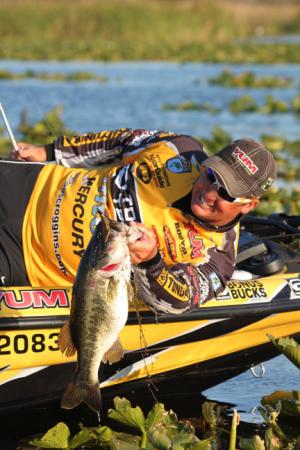 “Those are great ambush points and it’s cover that often gets overlooked because they’re small isolated patches, usually on the outside edge of a weed line,” he said. “It’s not like you’re going to catch a whole school of fish off of one clump. Most of the time, you’ll get two or three bites. It’s also easy to cover because it’s a very small target. It’s a high-percentage point that takes hardly any time to fish effectively.”
“Those are great ambush points and it’s cover that often gets overlooked because they’re small isolated patches, usually on the outside edge of a weed line,” he said. “It’s not like you’re going to catch a whole school of fish off of one clump. Most of the time, you’ll get two or three bites. It’s also easy to cover because it’s a very small target. It’s a high-percentage point that takes hardly any time to fish effectively.”
While bait color is less important in the darker realm beneath dense mats, Scroggins pays more attention to his jig’s appearance around the scattered stuff. Natural colors like green pumpkin, brown and watermelon work best in clear water, while black/blue or dark neons provide the necessary contrast if the water is stained. Scroggins flips and pitches his jig on a 7-foot, 8-inch extra-heavy Duckett flipping stick with a 6.3:1 Lews baitcaster holding 65-pound braid, which helps him manage big fish by slicing through the salad.
“When I’m flipping the isolated grass, I’ll flip the jig in there and dead stick it,” he said. “I’ll let it go to the bottom for 15-20 seconds before I do anything. With a Craw Chunk, that jig will actually stand up like a crawfish would be in fighting mode. I’ll let it sit there, hop it twice and go on to the next drop.”
FOOTBALLS ON THE SIDELINES
In deep water, Prince likes the big profile of a ¾-ounce Booyah Pigskin Jig with a full skirt guaranteed to move a lot of water. This bait, however, is no one-trick pony and Prince knows that a standard football head jig can also stir up plenty of trouble on the bank.
“A lot of people don’t throw it in shallow water because they think all the fish are out deep during the summer,” Prince said. “The fish will get shallower than a lot of people think – especially if we get a lot of rain. If the water gets dirty, the fish will move up shallow to feed.”
Prince likes Molting Craw and Nest Robber color patterns matched with a green pumpkin craw chunk. In much of the water he fishes during the summer months, these color patterns match the stage of crawfish development, and in clear, shallow water, he wants the jig to look as natural as possible.
Cover is key, as the Pigskin’s rumbling ways generate lots of fish-attracting commotion when it traverses wood or rock. As with the traditional offshore theater, Prince sticks with a meticulous drag that gives fish plenty of time to spot that noisy, hefty profile representing an easy meal.
“You don’t want to move it a lot in the summer,” he said. “The fish don’t want to chase anything.”
STROKE FOR STRIKES
Back out deep, Scroggins will often taunt lackadaisical summer bass with an old-school stroking technique. He’s more likely to go with a 3/8- to ½-ounce flipping jig, but a football head of similar size works just as well. In fact, the latter proves advantageous if you’re short on rods, as the one jig enables you to instantly shift gears from dragging to stroking.
Armed with a 7-foot heavy-action rod, a 6.3:1 Lews reel and 15-pound fluorocarbon, Scroggins fits his jig with a plain chunk trailer that allows for a quick return to the bottom after each stroke. Noting that this technique works best when fish suspend 4-5 feet off the bottom, he said the proper stroking motion requires controlled force with sharp direction.
“It’s almost like a ¾-of-the-way hook set,” he explained. “You’re just popping it on slack line. The key is that it creates a bottom disturbance and the fish just see something fly off the bottom and then fly back down. That triggers a reaction strike.”
If the fish play hard to get and his day heads south, Scroggins said he can always count on bluff walls to keep him out of trouble. Bluffs may be more popular for big fish during the winter, when they retain heat and pull bass close to their mostly vertical surface, but bluffs also benefit the summer game with shade, bait positioning and plenty of depth ranges so fish can rise to feed and then quickly access deeper, cooler water.
Here, Scroggins will commonly throw a 3/16-ounce Booyah Shaky head with a 6-inch Yum Mightee Worm. Benefits when used as a primary lure include a quick sink-rate to reach deeper fish and a smaller profile when fish are accustomed to seeing bigger, skirted jigs. He also uses it as a follow-up bait when he misses a fish on a jig for the same reasons.
